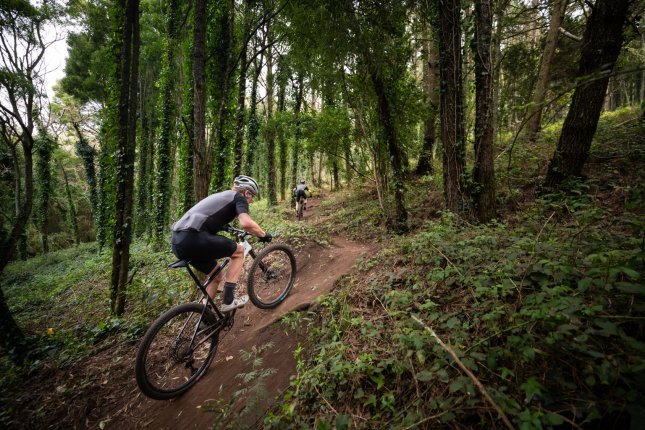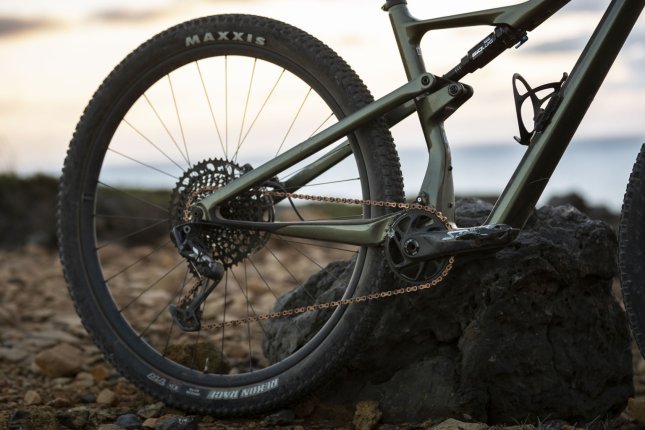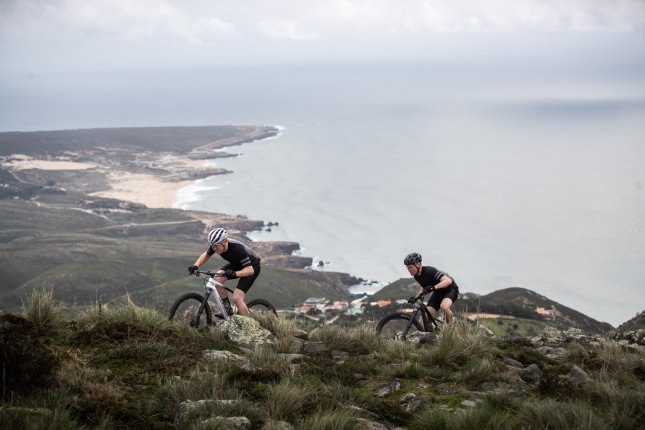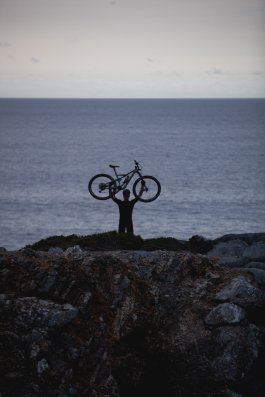
How To: Inspect Your Bike
Ready for the season? We’ll show you how to prepare your bike for the upcoming season and which parts require special attention.
Choosing the right chainring for your single-speed setup is crucial. We'll show you what's important so you can pedal efficiently.
Some single-speed cranks come with a chainring included, like those from SRAM. For brands like Shimano, however, you often need to buy the chainring separately from the crankarms. While this might seem inconvenient, it's actually quite sensible because different types of riders have different needs when it comes to gearing and range.
But which chainring size is the right one? Let's dig into some details about you, your bike, and where you'll be riding, and by the end, we'll know for sure!
Your choice of gearing largely depends on your usual riding terrain. If you're tackling long climbs or tours with lots of elevation, opting for a chainring with fewer teeth makes sense, as it gives you lighter gears for those tough ascents. If you're mostly riding in flat areas without the need to conquer steep climbs often, a larger chainring might be better as you probably don't need the ultra-light gears, but you'll have extra pedaling room at higher speeds.
In practice, however, a universally practical gearing often makes the most sense. You're likely to take your bike on vacation once in a while, and you can't always predict the ramps you'll encounter. When in doubt, we generally recommend leaning towards the middle or smaller chainrings.

Long climbs demand the right gearing – the right chainring helps you ride uphill with ease.
If you don't ride very often but love tackling hilly terrain, we suggest going for a smaller chainring. There's no shame in riding with a 28 or 30 tooth ring if it helps you climb all the hills with a steady cadence and without your heart racing.
The chainrings of 1x12 groups are available in 2-tooth increments from 28 to 38. The most commonly used chainrings are 30, 32, and 34 teeth.
For those with average fitness, a 32 tooth chainring is usually the best compromise. That's why SRAM, for instance, nearly always equips their standard cranks with a 32T chainring (T stands for Teeth).
Stronger riders might opt for a 34T or 36T chainring. The top speed in the hardest gears isn't the only criteria, rather, it's about having a reasonable, relatively straight chain line in the gears you use most often. This minimizes wear and increases efficiency since a highly slanted chain causes more friction and thus some power loss.
Then there's the factor of whether you prefer high cadence with less force or moderate cadence with more force. The former type needs lighter gears. Typically, a higher cadence with less force on the pedal yields more efficient power output and helps prevent potential knee problems that can arise from long-term high strain.

The fitter you are, the bigger your chainring can be – climb efficiently with power at the pedals.
Obviously, your choice of chainring is also directly linked to the range of your cassette at the back. Most of you will be using a 12-speed setup by now, which offers either 50 or 52 teeth on the largest sprocket with SRAM, while Shimano's current cassettes come with 51 teeth.
You can easily relate the sizes of the chainrings and the sprockets on the cassette by looking at the number of teeth, as their diameter is linear to the number of teeth. To make this topic more tangible, let's use a simple formula:
A. Lightest Gear
With this simple formula, you can predict the gearing of a drive system and explore the possibilities.
For example, if we have a 32-tooth chainring and a SRAM cassette with 10-52 teeth, which is SRAM's standard setup, it means: 32/52 = 0.615
This means that the cassette and thus the entire rear wheel makes just over half a turn for every full turn of the crank.
B. Hardest Gear
With our setup of a 32-tooth chainring and a 10-52 cassette, it means: 32/10 = 3.2
This means that the cassette and thus the entire rear wheel turns 3.2 times for every full turn of the crank.
C. Categorization
Now, you can either experiment a lot or initially rely on our experience and "rules of thumb". We try to categorize the lower and higher gear ratios roughly.
Lightest Gear:
Highest Gear:
Combining extremely light and extremely heavy gears in one drivetrain isn't possible due to the cassette's limited range. But with our rough guide, you'll definitely find the right gearing for you. Personally, I ride my two 29er mountain bike Fullys with a 32T chainring and a 10-50T SRAM cassette each, and I manage just fine everywhere. I hardly ever need the highest gear.

Your chainring-to-cassette combination determines how easy or hard it is to pedal – tooth ratio makes all the difference.
Depending on the size of the rear wheel, the gearing unfolds differently on the ground. Take a 29" and a 27.5" bike, for example: If they ride next to each other in the same gear, with the same gearing ratio and pedaling rate, the 29er will pull ahead because the same gearing unfolds differently on the ground due to the larger wheel size.
This means that 27.5" bikes can handle "heavier" gearing than 29ers. While we recommend a 32T chainring as standard for 29ers, it would be a 34T chainring for 27.5" bikes. This compensates for the wheel size difference almost completely.

Choosing the right chainring size is crucial, especially in combination with wheel size.
Oval chainrings feel quite different. You'll need to adjust your pedaling to it, but can benefit from the favorable lever ratios. Your muscles will also need some time to adapt as the rhythm of pedaling changes and the force peaks are distributed differently.
Switching from round to oval, you'll initially be skeptical: It certainly feels odd at first, no doubt. To really form an opinion, you need to give the oval chainring some time.

With the right chainring choice, reaching the top feels effortless and rewarding.
Now that you've "defined" yourself as a type of rider, the choice of chainring should be pretty clear. Remember, you'll hardly ever need the highest gear on the trail - most riders are not pedaling at 50-60 km/h on a trail (or anywhere else), but rather keeping the bike under control or just letting it roll. Therefore, having "reserves" in the lighter gears is more important than in the heavy ones.
If you don't sit on the saddle much or just want to ride comfortably uphill, feel free to go for a smaller chainring. You wouldn't be the first to choose too big of a chainring out of vanity.
If you need more help, always feel free to contact our Service Team.
